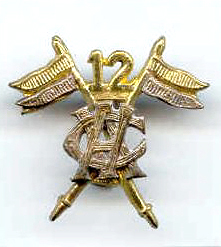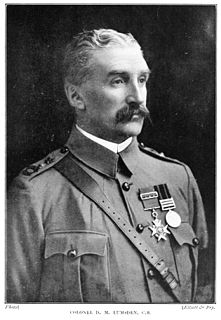 W
WThe 1st Horse is a cavalry regiment of the Indian Army, which served in the British Indian Army before independence. The regiment was raised in 1803 as Skinner's Horse by James Skinner as an irregular cavalry regiment in the service of the East India Company. It was later renamed the 1st Bengal Lancers.
 W
WThe 4th Cavalry was a cavalry regiment of the British Indian Army.
 W
W4th Horse is a cavalry regiment of the Indian Army which originated as part of the British Indian Army.
 W
WThe 5th Horse is an armoured regiment of the Pakistan Army. It was previously known as the 5th King Edward's Own Probyn's Horse, which was a regular cavalry regiment of the British Indian Army. It was formed in 1921 by the amalgamation of the 11th King Edward's Own Lancers and the 12th Cavalry.
 W
WThe 6th Lancers is an armoured regiment of the Pakistan Army. Previously, it was known as the 6th Duke of Connaught's Own Lancers , and was a regular cavalry regiment in the British Indian Army. It was formed in 1921 by amalgamation of the 13th Duke of Connaught's Lancers and the 16th Cavalry. The regiment and its predecessors have seen active service on the North West Frontier, in Egypt during 1882, in China during the Boxer Rebellion, the two World Wars and the Indo-Pakistani War of 1965. On the Partition of India in 1947, the regiment was allotted to the Pakistan Army, where it remains in service today.
 W
WThe Deccan Horse or 9 HORSE is one of the oldest and most decorated armoured regiments of the Indian Army, which was a regular cavalry regiment of the British Indian Army, the Royal Deccan Horse. It was formed from the amalgamation of two regiments after World War I. They saw service from the Mutiny of 1857 up to and including World War II.
 W
WThe 11th Cavalry , is an armoured regiment of the Pakistan Army. It was previously known as the 11th Prince Albert Victor's Own Cavalry and was a regular cavalry regiment of the old British Indian Army. It was formed in 1921 by the amalgamation of the 21st Prince Albert Victor’s Own Cavalry and the 23rd Cavalry.
 W
WThe 5th Horse is an armoured regiment of the Pakistan Army. It was previously known as the 5th King Edward's Own Probyn's Horse, which was a regular cavalry regiment of the British Indian Army. It was formed in 1921 by the amalgamation of the 11th King Edward's Own Lancers and the 12th Cavalry.
 W
WThe 5th Horse is an armoured regiment of the Pakistan Army. It was previously known as the 5th King Edward's Own Probyn's Horse, which was a regular cavalry regiment of the British Indian Army. It was formed in 1921 by the amalgamation of the 11th King Edward's Own Lancers and the 12th Cavalry.
 W
WThe 12th Cavalry is an armoured regiment of Pakistan Army. It was formed in the British Indian army in 1922 by the amalgamation of 22nd Sam Browne's Cavalry and 25th Cavalry.
 W
WThe 6th Lancers is an armoured regiment of the Pakistan Army. Previously, it was known as the 6th Duke of Connaught's Own Lancers , and was a regular cavalry regiment in the British Indian Army. It was formed in 1921 by amalgamation of the 13th Duke of Connaught's Lancers and the 16th Cavalry. The regiment and its predecessors have seen active service on the North West Frontier, in Egypt during 1882, in China during the Boxer Rebellion, the two World Wars and the Indo-Pakistani War of 1965. On the Partition of India in 1947, the regiment was allotted to the Pakistan Army, where it remains in service today.
 W
WThe 13th Lancers is an armoured regiment of Pakistan Army. It was formed in 1923 as 13th Duke of Connaught's Own Lancers by the amalgamation of 31st Duke of Connaught's Own Lancers and 32nd Lancers. On Partition of India in 1947, the regiment was allotted to Pakistan.
 W
WThe 13th Lancers is an armoured regiment of Pakistan Army. It was formed in 1923 as 13th Duke of Connaught's Own Lancers by the amalgamation of 31st Duke of Connaught's Own Lancers and 32nd Lancers. On Partition of India in 1947, the regiment was allotted to Pakistan.
 W
WThe 14th Murray's Jat Lancers, also sometimes known as the Murray's Jat Horse, was a cavalry regiment of the British Indian Army.
 W
WThe 14th Prince of Wales's Own Scinde Horse was a regular cavalry regiment of the Bombay Army, and later British Indian Army, it can trace its formation back to The Scinde Irregular Horse raised at Hyderabad on 8 August 1838. It was named after the province of Sind now in Pakistan, where it was raised to protect the trade route from the Bolan Pass to Sukkur on the Indus River and fight against the marauding Baluchi warriors. It later expanded to the 1st, 2nd and 3rd Scinde Horse. These three regiments were absorbed into the regular forces after the Mutiny of 1857 and became the 35th Scinde Horse and the 36th Jacob's Horse. They saw active service in Northern and Central India, Persia, Afghanistan on the North West Frontier and, during World War I, where they served in France and Palestine. The two regiments were amalgamated in 1922, as the present 14th Prince of Wales's Own Scinde Horse which served in World War II. Scinde Horse is the only regiment known to honour its enemy till date and has not changed its badge since its raising, unlike others who have done so-numerous times. At one point, the regiment carried 9 Standards while on parade, a unique privilege given to it for its valor. The regiment was the first Cavalry unit in the British Indian Army to get mechanized in the Indian sub-continent at Rawalpindi, in 1938. It was also the first Cavalry regiment to get the President of India's Standard post independence.
 W
WThe 15th Lancers (Baloch) is an armoured regiment of the Pakistan Army. It was formed in 1922 by the amalgamation of the 17th Cavalry and the 37th Lancers.
 W
WThe 15th Lancers was a cavalry regiment of the British Indian Army which existed from 1858 to 1921. Raised during the 1857 uprising, the regiment later saw service in the Second Afghan War of 1878–80 and the First World War. The regiment was one of the single class regiments, with all troops being recruited from the Multani Seraiki Muslim community.
 W
WThe 16th Light Cavalry is a regiment of the Armoured Corps, a primary combat arm of the Indian Army. Prior to India gaining independence from the British in 1947, it was a regular cavalry regiment of the British Indian Army. It was formed in 1776 and is the oldest armoured regiment raised in India. The 16th Light Cavalry saw service in a number of conflicts ranging from the Second Anglo-Mysore War in 1781 to World War II. It has a number of battle honours including "Punjab 1965" earned during the Indo-Pakistani War of 1965.
 W
WThe 19th Lancers is an armoured regiment of the Pakistan Army. Before 1956, it was known as 19th King George V's Own Lancers, which was a regular cavalry regiment of the British Indian Army. It was formed in 1922, by the amalgamation of 18th King George's Own Lancers and 19th Lancers . On Partition of India in 1947, the regiment was allotted to Pakistan.
 W
WThe 20th Lancers was a regiment of the British Indian Army.
 W
WThe 20th Lancers is an armoured regiment of the Pakistan Army.
 W
WThe 36th Jacob's Horse were a unit of cavalry of the British Indian Army.
 W
WThe Central India Horse was a regular cavalry regiment of the British Indian Army. They were formed at the start of the Indian Rebellion of 1857 and served in the Great War and the Second World War.
 W
WThe Governor General's Bodyguard was a cavalry regiment of the British Indian Army. The regiment was, in effect, the Indian equivalent of the Household Cavalry of the British Army.
 W
WThe Guides Cavalry is an armoured regiment of the Pakistan Army which was raised in 1846 as The Corps of Guides. During more than a hundred and fifty years of military service, the regiment has earned the reputation of one of the most renowned military units in the world.
 W
WLumsden's Horse, also known as Colonel Lumsden′s Corps, was the name given to the Indian Mounted Infantry Corps, which was formed in Calcutta in 1899 by Lieutenant-Colonel Dugald McTavish Lumsden of the Assam Valley Light Horse. The new corps was raised from volunteers from various existing Indian regiments, including the Assam Valley Light Horse. Colonel Lumsden contributed 50,000 rupees.
 W
WThe Poona Horse is an armoured regiment in the Armoured Corps of the Indian Army. The regiment, known before independence as The Poona Horse, was raised as a regular cavalry regiment in the Bombay Presidency army of the East India Company. It was formed from the 3rd Regiment of Bombay Light Cavalry, raised in 1820, and the Poona Auxiliary Horse, raised about 1817–18. The latter unit was absorbed into the regular forces about 1860 and the two regiments later became the 33rd Queen Victoria's Own Light Cavalry and the 34th Prince Albert Victor's Own Poona Horse.